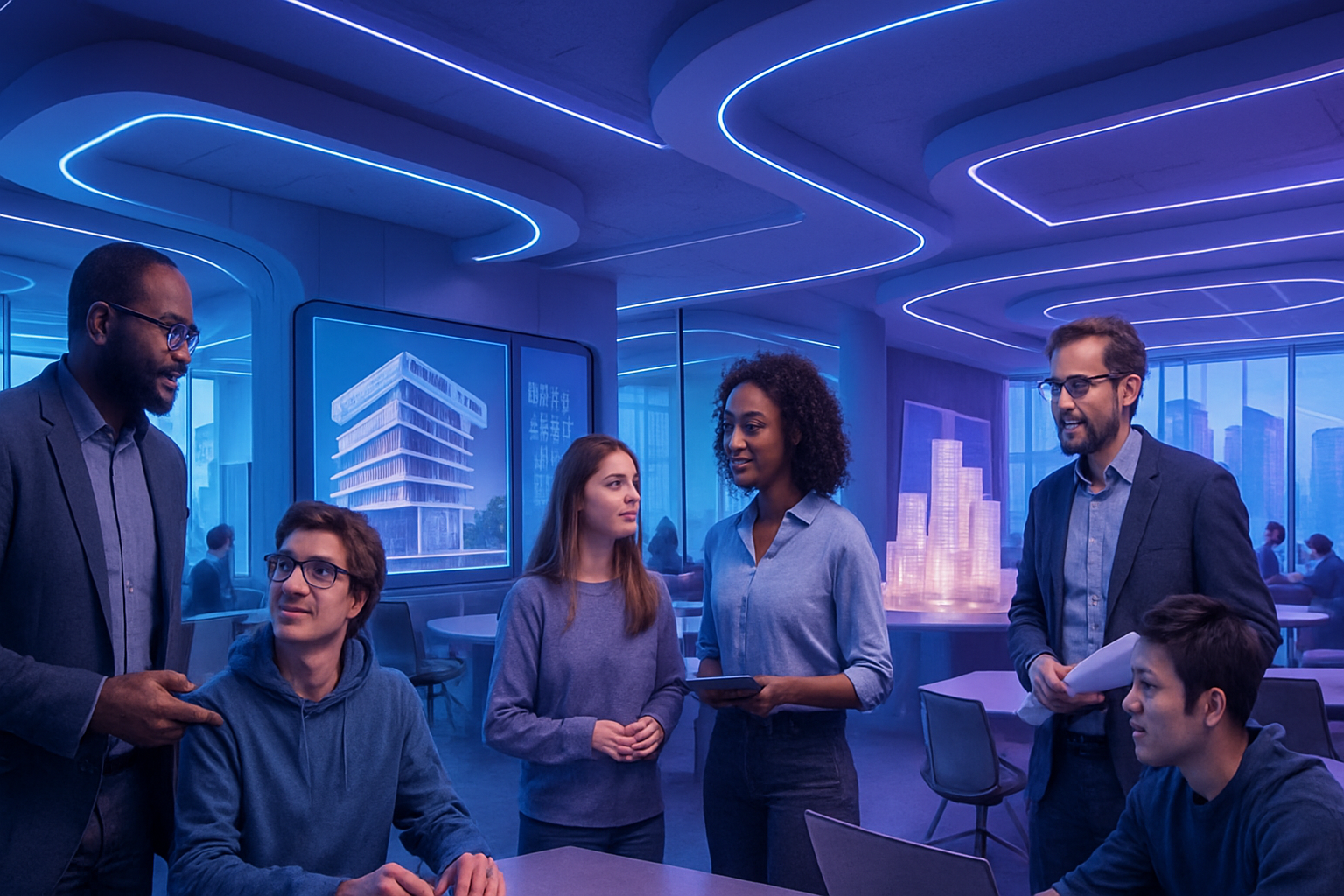The School of Architecture and Urban Planning is enriched by new faculty for 2025. This development marks a significant turning point in the teaching of arts and media sciences. The integration of these experts will bring creativity and multidisciplinary expertise to the academic community. These recognized professionals are redefining pedagogical practices and research fields around technology, sustainability, and human interaction. Their arrival is essential for shaping the future of architectural and environmental projects, prompting critical reflection on design and innovation.
Renowned educators join the School of Architecture and Urban Planning
The School of Architecture and Planning (SA+P) announces the arrival of four new faculty members for the 2025 academic year. These significant additions enrich the institution with creativity and knowledge in multidisciplinary fields. Hashim Sarkis, dean of the school, states: “These individuals add considerable strength and depth to our faculty.”
Karrie G. Karahalios: A pioneer in media and sciences
Karrie G. Karahalios, a graduate of MIT, joins the MIT Media Lab as a tenured professor. Her expertise in the study of social media and communications, particularly in an algorithm-driven context, positions her as a leading figure. Karahalios has received the National Science Foundation CAREER Award and the ACM Distinguished Member title, distinctions that testify to the quality of her research.
Pat Pataranutaporn: A visionary in human-AI interaction
Pat Pataranutaporn, holding a Ph.D. from MIT, becomes an assistant professor in media and sciences at the MIT Media Lab. His innovative research explores how artificial intelligence systems can enhance human cognition. As co-director of the Advancing Humans with AI program, Pataranutaporn envisions solutions to foster personal development through technology.
Mariana Popescu: Computational architecture and sustainability
Mariana Popescu, a new assistant professor in the Department of Architecture, stands out for her approach to parametric design and digital fabrication. A specialist in computational architecture, she focuses on the innovative use of materials in sustainable construction. Also named “Pioneer” on MIT Technology Review’s list of 35 innovators under 35, her contributions to the field are expected to be influential.
Holly Samuelson: Building technology and environmental health
Holly Samuelson joins the Department of Architecture as an associate professor. Her research and teaching focus on building design, emphasizing human and environmental health. Samuelson is currently collaborating on projects using advanced simulation to address issues such as greenhouse gas emissions and indoor environmental quality.
An evolution towards educational innovation
The arrival of these experts on the MIT campus is part of a broader movement towards innovation in education. Other initiatives, such as integrating artificial intelligence into educational processes, continue to transform the academic landscape. For instance, linking traditional training with emerging technologies, these educators contribute to shaping the education of the future. For more details on these educational reforms and their impact, see these relevant articles on the integration of artificial intelligence: LIA in classrooms, OpenAI’s plan, and Rethinking education with AI.
These changes within the faculty reinforce MIT’s commitment to academic progress and excellence in research, thereby addressing contemporary challenges in architecture and urban planning.
Questions and answers regarding the new School of Architecture and Urban Planning for 2025
What new educational initiatives will be implemented by the new faculty in 2025?
The new faculty will come with innovative and multidisciplinary approaches, integrating themes such as artificial intelligence, sustainability, and digital fabrication into their teaching.
What types of research will be conducted by the new faculty members?
The research will cover a variety of topics such as human-AI interaction, sustainable architectural design, and the ecological impact of buildings, also exploring new materials and manufacturing processes.
What is the academic background of the new faculty?
The new faculty members hold prestigious degrees from leading institutions such as Harvard, ETH Zurich, and MIT, combining expertise in architecture, technology, social sciences, and design.
How will these new faculty contribute to the student community?
They will bring a wealth of experience and knowledge, offering innovative courses and collaborative projects that will foster students’ skill development in a practical context.
What new programs or teaching techniques will be introduced with their arrival?
The programs will include courses on parametric design, the impact of technology on architecture, as well as advanced simulations to address real-world environmental health issues.
How can students benefit from the expertise of the new faculty?
Students will have the opportunity to learn directly from these experts, participate in interactive workshops, and benefit from personalized guidance for their research and design projects.
Will the new faculty organize events or workshops?
Yes, they plan to organize various events, such as lectures, seminars, and hands-on workshops, aimed at enriching the academic experience of students and promoting innovation.
What is the vision of the faculty for the future of architecture and urban planning with these new hires?
The faculty aims to be at the forefront of innovation by merging technology and design, addressing contemporary challenges while training the future leaders of architecture and urban planning.






